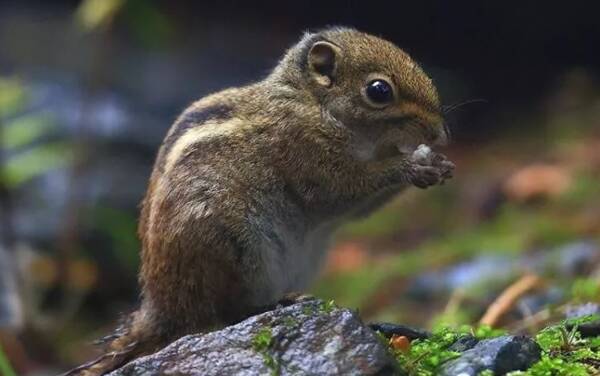Menetes berdmorei
IUCN
LCBasic Information
Scientific classification
- name:Menetes berdmorei
- Scientific Name:Menetes berdmorei,Multi-lined squirrel, line squirrel
- Outline:Rodents
- Family:Rodentia Sciuridae S.Squirrel
Vital signs
- length:177-210mm
- Weight:
- lifetime:
Feature
There is a light-colored stripe in the middle of the back, and two black stripes and two light yellowish-white longitudinal stripes on each side.
Distribution and Habitat
Striped squirrels are distributed in Jianshui, Jingdong, and Luchun in southern Yunnan in China, and in Myanmar, Thailand, Indochina, and the Malay Peninsula abroad.
They live in tropical forests, and are more active on the ground, rarely climbing tall trees. They mostly choose to live in dwarf vine bushes and bamboo forests at the edge of the forest. They mainly eat plant seeds, fruits, and tender shoots, and also eat insects.
Appearance
The body is slightly smaller than the red-bellied squirrel. The snout is pointed. The tail is shorter than the body length, and the hair at the end and sides of the tail is longer. The snout tip, under the eyes and cheeks are light yellow-brown. The hair on the back of the body is gray-black with orange-brown. The vertical stripe in the middle of the back is lighter in color, the black stripes on the sides of the body are wider, and the thin light yellow-white vertical stripes are narrower. The abdomen is yellow-white, the tail is brown-red, and the tail tip is white.
Details
There are six species of animals in the Sciuridae family, three species of squirrels and three species of flying squirrels, namely the red-bellied squirrel, the striped squirrel, the Herschel squirrel, the red flying squirrel, the white-faced flying squirrel and the small flying squirrel.

The striped squirrel is also called the multi-striped squirrel. It is smaller than the ordinary squirrel, but has several vertical stripes on the back and sides of the body. The tail is significantly shorter than the body length. Adult cheek teeth have flat crowns, and the mandibular molars no longer have a large depression in the middle. Incisors are dark orange. There are three pairs of nipples. They live mainly on the ground.
Striped squirrels generally live in dwarf vines, woods and bamboo forests, often move on the ground, and often appear in fields near villages.
They are active during the day and are most active in the early morning. They do not hibernate, but their activities decrease in winter. In the cold winter, they rarely leave their nests.

Listed in the China Biodiversity Red List - Vertebrate Volume, with an assessment level of Least Concern (LC)
Listed in the National Three Protected Animals List








